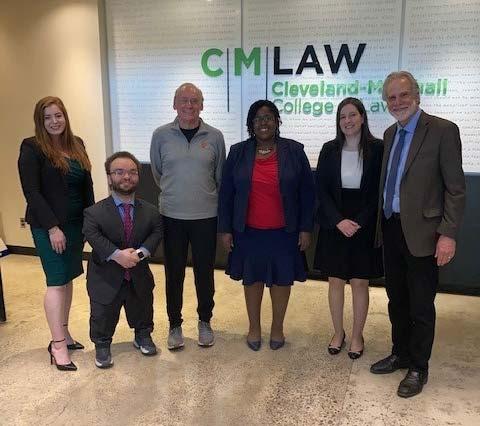
Three Cleveland-Marshall College of Law Students, Langston Bailey-Murray, Erica Sammon, and Caitlin Steiner had the opportunity during the Spring 2021 semester to present both the Cleveland City Prosecutor and the Cuyahoga County Juvenile Court a proposal to establish a restorative justice diversion alternative for prosecutions in the City of Cleveland and Cuyahoga County Juvenile Court. Working with Professor Robert Triozzi, Director of the C|M Law Criminal Justice Center’s Day 1 Project, the students studied the principles of restorative justice, a long-standing holistic criminal justice practice where the aim is to bring victims of harm, those who committed the harm, and community members together in an effort to repair the harm caused by the offense.
The students’ Restorative Justice proposal was inspired by the interest and initiatives already being generated in the Cleveland community. Students had the opportunity to attend several meetings of the Detroit-Shoreway/Ohio City restorative justice working group and met with leaders from the Cleveland Mediation Center, the City of Cleveland Prosecutor’s Office, and Cuyahoga County Juvenile Court.
“I really appreciated having the chance to connect with other members of our local community to promote restorative justice-related goals,” said Caitlin Steiner. “In addition, it was great to have the opportunity to learn from others involved with restorative justice in different areas of the country, and to hear about how implementing restorative justice practices impacted those communities. Seeing this exchange of ideas blossom into the development of our final restorative justice proposal was a really great experience.”
From their community meetings, their studies, and research into national best practices, the students co-wrote the proposal suggesting how a well-constructed community-based Restorative Justice model could be established to further the objectives of both neighborhood organizers and the decision-makers in the criminal justice system. The model the students proposed was adaptable to accommodate referrals from either or both the adult and juvenile justice systems and was designed to be a replicable model for community-based organizations across the city and county.
At the conclusion of the Practicum, the students had the opportunity to meet with and personally present their proposal to Cleveland City Prosecutor Aqueelah Jordan who responded enthusiastically to the effort. The proposal was also submitted to Juvenile Court Judge Kristin Sweeney who also responded enthusiastically to the idea. A restorative justice diversion alternative is presently under active consideration by the Court.
“After the practicum I feel that I can engage in the criminal justice system at an individual level,” said Erica Sammon. “Professor Triozzi has given me the opportunity to speak with several community stakeholders and has led discussions to create meaningful change to the criminal justice system in Cuyahoga County. This practicum presents an opportunity to engage in the real-life practice of criminal law in Cleveland and an opportunity to make a positive impact on the practice.”
